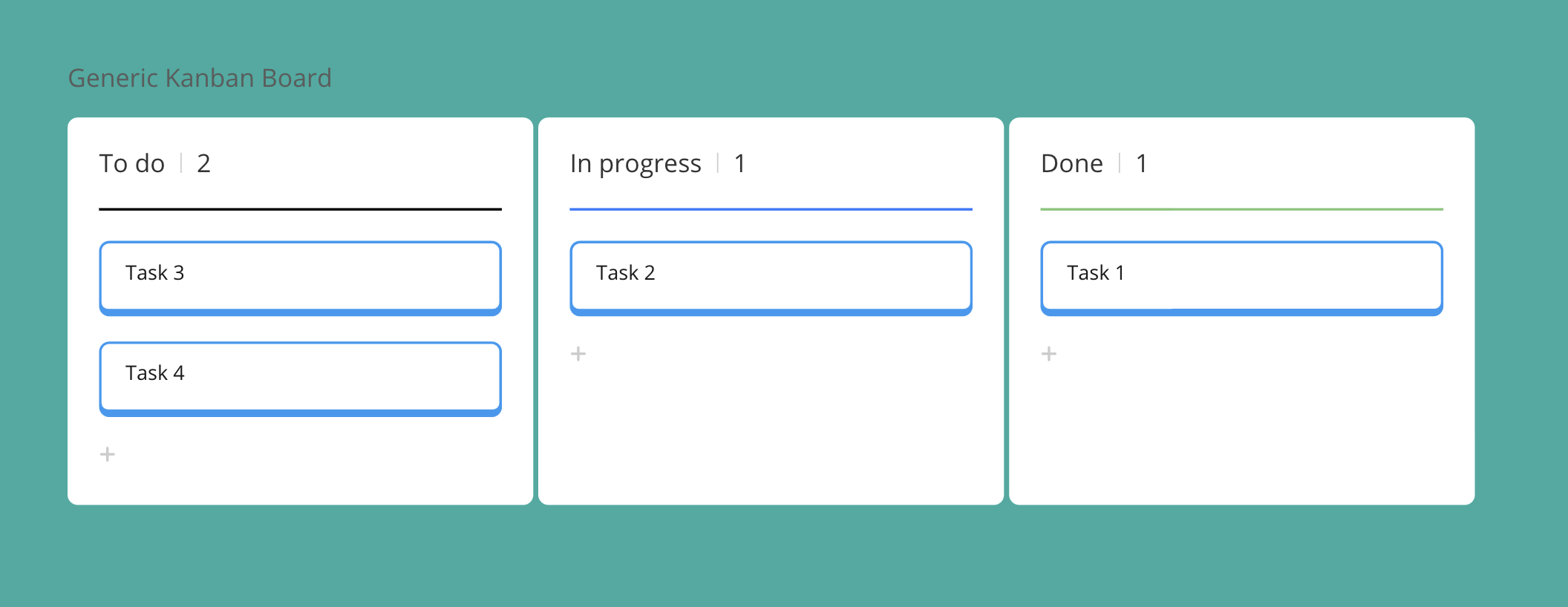Boost Your Productivity: Timeboxing and Kanban for Creatives
As creatives, managing our time can be a delicate balancing act. Between juggling our personal lives, day jobs and passion projects, it can feel like there are never enough hours in the day. Today, I want to introduce you to two powerful productivity strategies - timeboxing and Kanban.
These methods will not only help you manage your time, but also increase the quality and quantity of your creative output. The techniques we'll explore provide a framework for optimising your creativity.
Their simplicity and flexibility make them easy to adapt to any creative process, allowing you to tailor them to your unique workflow. So without further ado, let's explore these game-changing methods that can transform your creative journey.
The cost of context switching
Before we delve into the concepts of timeboxing and Kanban, it's important to understand a concept known as 'context switching'.
So what exactly is context switching, and why should it matter? You might ask.
Context switching, in its simplest form, is the process of shifting attention between different tasks or activities.
Consider this scenario: you're deep in the process of sketching a new character design when a social media notification suddenly pulls you away. You take a few minutes to reply and check your feed.
Finally, you put your phone down and return your attention to your sketch. But the seamless flow of creativity you enjoyed before the interruption is gone. You struggle to regain that deep focus, to reconnect with the character's personality, to recapture the artistic vision that was so clear just moments before.
This is a prime example of the cost of context switching. Even though the interruption was brief, the time it takes to regain your previous level of focus is disproportionately longer. Then there's the frustration of losing that precious 'flow' state where creativity thrives. It's not just the minutes spent on the distraction; it's the cognitive cost of disengaging from a task and then having to re-engage later. This cost can be a significant drain on productivity, especially if these switches occur frequently throughout the day.
That's because our brain isn't designed to shift focus quickly without a cost - that cost comes in the form of time and cognitive resources.
When we switch between tasks, especially complex ones, our mind has to remember the rules and status of the new task. This is why, after an interruption, we may feel disoriented and find it difficult to return to our previous level of engagement and efficiency.
In today's digital age, context switching is an increasingly common problem. Notifications, emails, news - they all constantly compete for our attention, creating an environment where multitasking seems inevitable.
However, research consistently shows that multitasking is largely a myth. Our brains are not designed to handle multiple tasks simultaneously, but rather to shift focus from one to another, leading to reduced efficiency and increased mental fatigue.
To combat this problem, strategies such as timeboxing and Kanban can be incredibly valuable. By setting aside time for different tasks and visualising our workflow, we can minimise context switching, optimise our productivity and provide a fertile ground for our creativity to flourish.
Understanding timeboxing
Timeboxing is a simple but effective strategy for minimising the negative effects of context switching. The technique involves setting aside specific chunks of time to work on a single task or context, ranging from a quick fifteen-minute brainstorming session to an intensive three-hour work sprint.
The key to timeboxing is not to micromanage every little task on your calendar, but to allocate substantial, uninterrupted time to stay productively engaged and focused on a single aspect of your work. By immersing yourself in one context per timebox, you reduce the cognitive load of frequent context switching.
Timeboxing not only mitigates the mental drain caused by constant task switching, it also answers an essential question: "What should I focus on next?" By breaking your workday into focused sprints, you create a clear roadmap of what needs your attention and when.
This is where Kanban comes in. While timeboxing determines the "what" and "when" of your focus areas, Kanban helps answer the question "What specific task should I work on next within this context? By visually organising tasks within each context or project, Kanban enhances the effectiveness of timeboxing and ensures smooth transitions between tasks within the same context.
Introducing Kanban
Originating from Japanese manufacturing practices, the Kanban method has become a productivity tool in many industries. Its compatibility with timeboxing further enhances its usefulness in the effective management of time and tasks.

Kanban is about visualising your workflow and breaking it down into distinct stages such as 'To Do', 'In Progress' and 'Done'. By providing a clear snapshot of your tasks and their current status, Kanban facilitates effective task management and prioritisation.
A key feature of Kanban is the concept of Work-In-Progress (WIP) limits. By limiting the number of tasks in the 'in progress' stage, WIP limits encourage task completion before new tasks are started, ensuring a steady, focused flow of work.
Using Kanban in a creative context
Adapting the Kanban method to a creative environment may seem challenging at first, but the key lies in its simplicity.
For those new to the method, it's a good idea to start with the standard column names: 'To Do', 'In Progress' and 'Done'. These categories are universal and apply to virtually all types of work. Starting with them can help you understand the basic Kanban workflow without the added confusion of identifying unique stages of your specific creative process.
As you become more familiar with the Kanban system, you can consider customising your board to better suit your workflow. For example, a digital artist might use stages such as 'Concept', 'Sketch', 'Colour' and 'Finalise'. But first, the focus should be on understanding and implementing the basic principles of Kanban, such as moving tasks around the board and adhering to WIP limits.
WIP limits play a key role in maintaining focus and reducing context switching. By limiting the number of active tasks, you're encouraged to concentrate on the current phase before moving on to the next, thereby maintaining a more consistent focus.
Where To Go From Here: Swimlanes, Work-In-Progress Limits, and Scheduling Your Life
Having mastered the basics of Kanban and timeboxing, you may be wondering what the next steps are to improve your productivity.
One concept you might want to explore in more depth is 'swimlanes' in Kanban. Swimlanes are horizontal divisions on your Kanban board that differentiate between specific categories or projects. They help to clearly separate tasks and effectively track progress, especially when dealing with multiple projects or complex tasks within a single project.
Another key area of focus should be setting your work in progress (WIP) limits. Finding the optimal WIP limit is a personal journey and often requires some experimentation. You want to find a balance that keeps you productive without causing burnout. A good starting point is a WIP limit of one. This encourages you to concentrate fully on a single task before moving on to the next, maximising focus and reducing context switching. Over time, as you better understand your capacity and work rhythm, you can adjust your WIP limits to suit your individual needs.
Beyond work projects, consider extending timeboxing to all areas of your life. Create a weekly schedule with defined timeboxes for activities such as work, writing, family time, hobbies and relaxation. By making conscious decisions about how you spend your time, you will ensure a balanced allocation across all areas of your life, improving your overall wellbeing and productivity.
Conclusion
Timeboxing and Kanban are tools to help you on your journey to productivity and creativity. They're not quick fixes, but techniques that help minimise the cost of context switching, allowing you to invest deeply in each task or project at hand.
By providing a structured framework, timeboxing and kanban can help create an environment in which your creativity can flourish, helping you to balance multiple responsibilities and creative pursuits.
So why not give these techniques a try? Start with timeboxing and basic Kanban and gradually adapt these methods to suit your specific needs and rhythm. You may find they're the key to unlocking your productivity potential, helping you balance your life and succeed in your creative endeavours.

